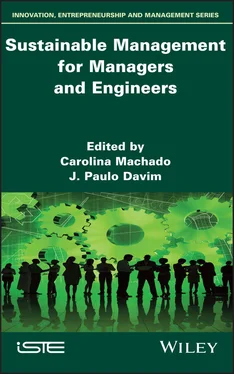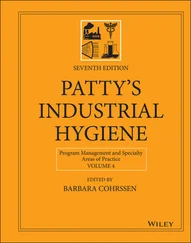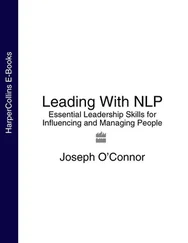1 Cover
2 Title page
3 Copyright First published 2020 in Great Britain and the United States by ISTE Ltd and John Wiley & Sons, Inc. Apart from any fair dealing for the purposes of research or private study, or criticism or review, as permitted under the Copyright, Designs and Patents Act 1988, this publication may only be reproduced, stored or transmitted, in any form or by any means, with the prior permission in writing of the publishers, or in the case of reprographic reproduction in accordance with the terms and licenses issued by the CLA. Enquiries concerning reproduction outside these terms should be sent to the publishers at the undermentioned address: ISTE Ltd 27-37 St George’s Road London SW19 4EU UK www.iste.co.uk John Wiley & Sons, Inc. 111 River Street Hoboken, NJ 07030 USA www.wiley.com © ISTE Ltd 2020 The rights of Carolina Feliciana Machado and J. Paulo Davim to be identified as the authors of this work have been asserted by them in accordance with the Copyright, Designs and Patents Act 1988. Library of Congress Control Number: 2020944442 British Library Cataloguing-in-Publication Data A CIP record for this book is available from the British Library ISBN 978-1-78630-439-1
4 Preface
5 1 Choice Architecture: Nudging for Sustainable Behavior 1 Choice Architecture: Nudging for Sustainable Behavior Sustainable management demands an in-depth understanding of current global economic, social and environmental pressures. This chapter deals with the use of choice architecture and its potential to influence decision-making. It focuses primarily on the discussion of how nudges influence choice, their applications to design interventions to promote behavioral change, and the challenges and ethical concerns to individuals’ freedom of choice.
1.1. Choice architecture and nudging 1.1. Choice architecture and nudging 1.1.1. Choice architecture People are becoming more concerned about the impact of their choices and are increasingly motivated to engage in sustainable behavior. Being environmentally sensitive in consumption, making healthy choices, and changing troublesome habits are critical to individual and societal well-being. Choice architecture refers to the context or environment in which people make choices. Behavioral science has come to realize that the way in which options are presented can have a significant impact on the option that is chosen, and that small changes in the decision environment may influence the decision-making process. People make countless choices in daily life, including decisions on how to use money, time, effort and attention. As individuals face a wide range of possible choices, have limited cognitive resources, and need quick decisions, they use heuristics to facilitate routine choices. Heuristics are shortcuts or rules of thumb that simplify and facilitate decisions. They are not bad per se but do not always produce the best outcomes. Frequently, they produce systematic biases in thinking and judgment that generate expected mistakes and postponement of complex decisions. For instance, in terms of formal logic, having more options should always be better than having fewer options. Nevertheless, due to limitations of time, attention and self-control, individuals often feel overloaded when given too many options. They may perceive having more options as worse than having fewer options, when, rationally, adding more options should always be better. Indeed, people do not have time, motivation, or attention to carefully and consciously think about every decision. For instance, research has shown that we make more than 200 daily food-related decisions [WAN 07]. In general, habits and impulses govern our decisions without awareness. Nudging overcomes this problem by recognizing that choice architecture has a huge impact on the decision-making process and that small changes in that process may generate better outcomes. Small changes, such as organizing the way the food is displayed in cafeterias, where healthy food is made more visible, contribute to healthier choices.
1.2. Theoretical roots and applications around the word 1.2. Theoretical roots and applications around the word Improving decisions while preserving freedom of choice is clearly ideal. These theoretical principles are not new and have been developed by behavioral sciences for the last four decades. The major contribution of nudge theory was to aggregate and bring the concepts to the public debate and encourage its application by governments and policymakers in large-scale public policy.
1.3. Nudging for sustainability 1.3. Nudging for sustainability 1.3.1. Nudging tools for sustainable behavior Nudging is often described as the application of behavioral economics. However, the systematic application of nudging to macroeconomics and management is still rare. Using behavioral change to promote sustainability involves approaches that can be applied in several areas, such as consuming, saving, investing and productivity. Nudging uses different sets of behavioral insights and we distinguish between two kinds of nudges: heuristics-based nudging and information-based nudging.
1.4. Challenges and final remarks 1.4. Challenges and final remarks Nudging connects antagonistic principles such as freedom of choice and the improvement of decision-making by routing preferences and choices. Under the principle of “maintaining the freedom of choice”, nudging utilizes the power of influencing choices like never before. Freedom has defined ethical limits. The nudging model departs from these limits – so-called “proper” behavior – and uses knowledge from social sciences to encourage ideal behavior. Even in the presence of transparent nudging, where people are aware that they are being nudged, nudging increases uniform behavior. In a nudged world, opposing the nudges requires assuming “irrelevant” costs and exerting constant effort. In an environment designed to influence subconscious decisions, a person must be continuously attentive to escape the framing design. It requires continued attention to escape default decisions, collect complete information while avoiding salience, frame and simplify the options set and develop critical thinking. Simply put, it would require that people stay permanently in the S2 way of thinking, which, by definition, is impossible. Nudging also depends on whether people trust a system – governments, institutions and corporations – enough to accept their interventions. Intervention designers need to recognize that people care, are committed to, and need to be involved in accepting interventions. Nudging will require greater ethical examination as people become more aware of being nudged, and as digital nudges become increasingly complex, personalized and developed by artificial intelligence systems using personal information. People can oppose the widespread use of nudging if they believe it interferes with true choice and preference, or even harms an individual’s self-interest. Public scrutiny of the nature of nudging policies will be critical for acceptance and should increase as nudging interventions spread. Analyzing how effective nudging interventions are over time requires a longer period of data collection to determine how permanent the effects of nudging are. Meanwhile, nudging will continue to develop rapidly as different sets of behavioral insights appear alongside new applications.
1.5. References
6 2 Embedding Corporate Sustainability in Human Resource Management Practice 2.1. Introduction 2.2. Corporate social responsibility and corporate sustainability 2.3. Human resource management 2.4. The nexus of human resource management and corporate sustainability 2.5. Embedding corporate sustainability in HRM practices 2.6. Conclusion 2.7. References
Читать дальше












